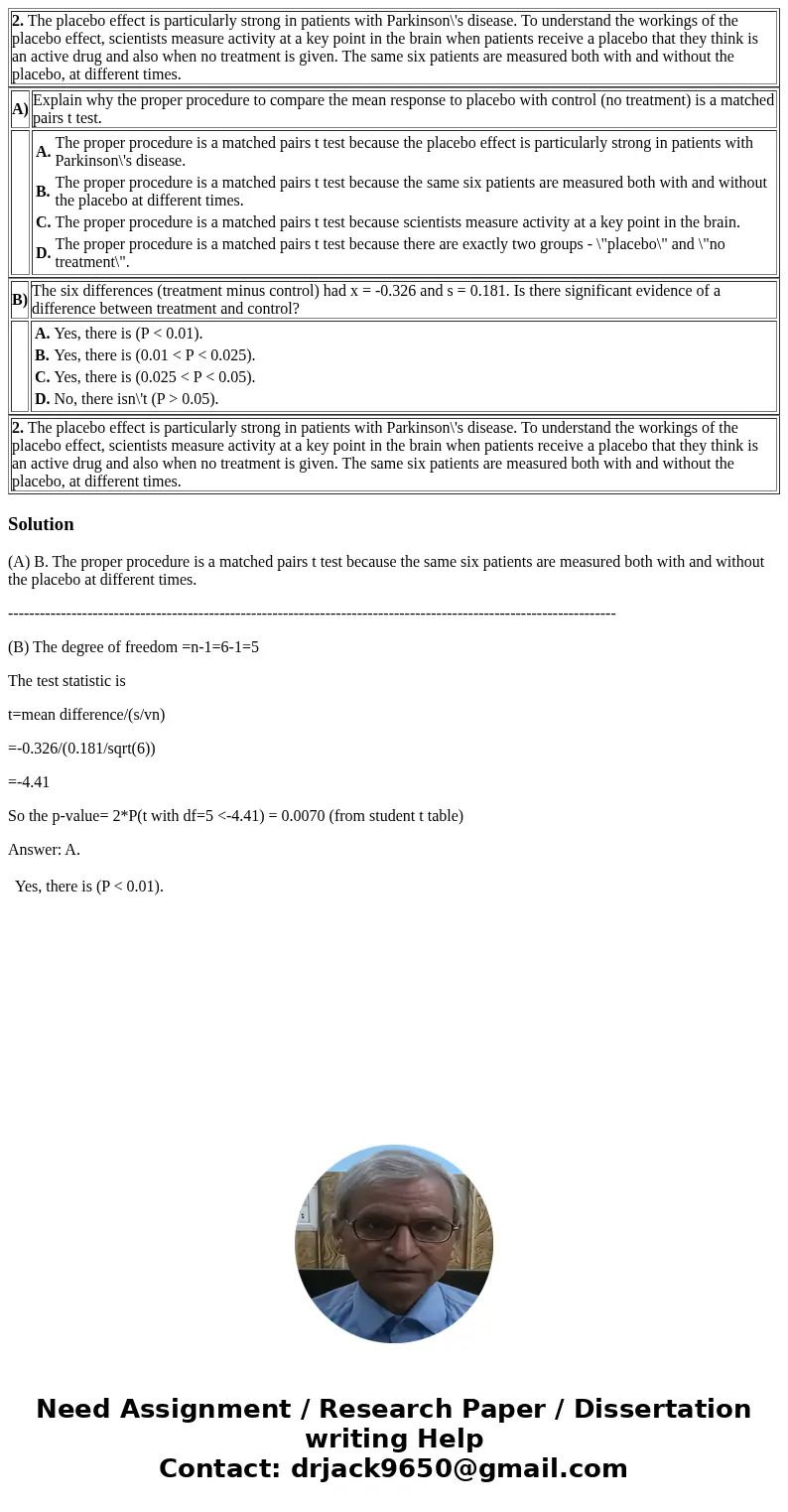2 The placebo effect is particularly strong in patients with
| 2. The placebo effect is particularly strong in patients with Parkinson\'s disease. To understand the workings of the placebo effect, scientists measure activity at a key point in the brain when patients receive a placebo that they think is an active drug and also when no treatment is given. The same six patients are measured both with and without the placebo, at different times. |
| A) | Explain why the proper procedure to compare the mean response to placebo with control (no treatment) is a matched pairs t test. | ||||||||
|
| B) | The six differences (treatment minus control) had x = -0.326 and s = 0.181. Is there significant evidence of a difference between treatment and control? | ||||||||
|
| 2. The placebo effect is particularly strong in patients with Parkinson\'s disease. To understand the workings of the placebo effect, scientists measure activity at a key point in the brain when patients receive a placebo that they think is an active drug and also when no treatment is given. The same six patients are measured both with and without the placebo, at different times. |
Solution
(A) B. The proper procedure is a matched pairs t test because the same six patients are measured both with and without the placebo at different times.
-------------------------------------------------------------------------------------------------------------------
(B) The degree of freedom =n-1=6-1=5
The test statistic is
t=mean difference/(s/vn)
=-0.326/(0.181/sqrt(6))
=-4.41
So the p-value= 2*P(t with df=5 <-4.41) = 0.0070 (from student t table)
Answer: A.
| Yes, there is (P < 0.01). |

 Homework Sourse
Homework Sourse